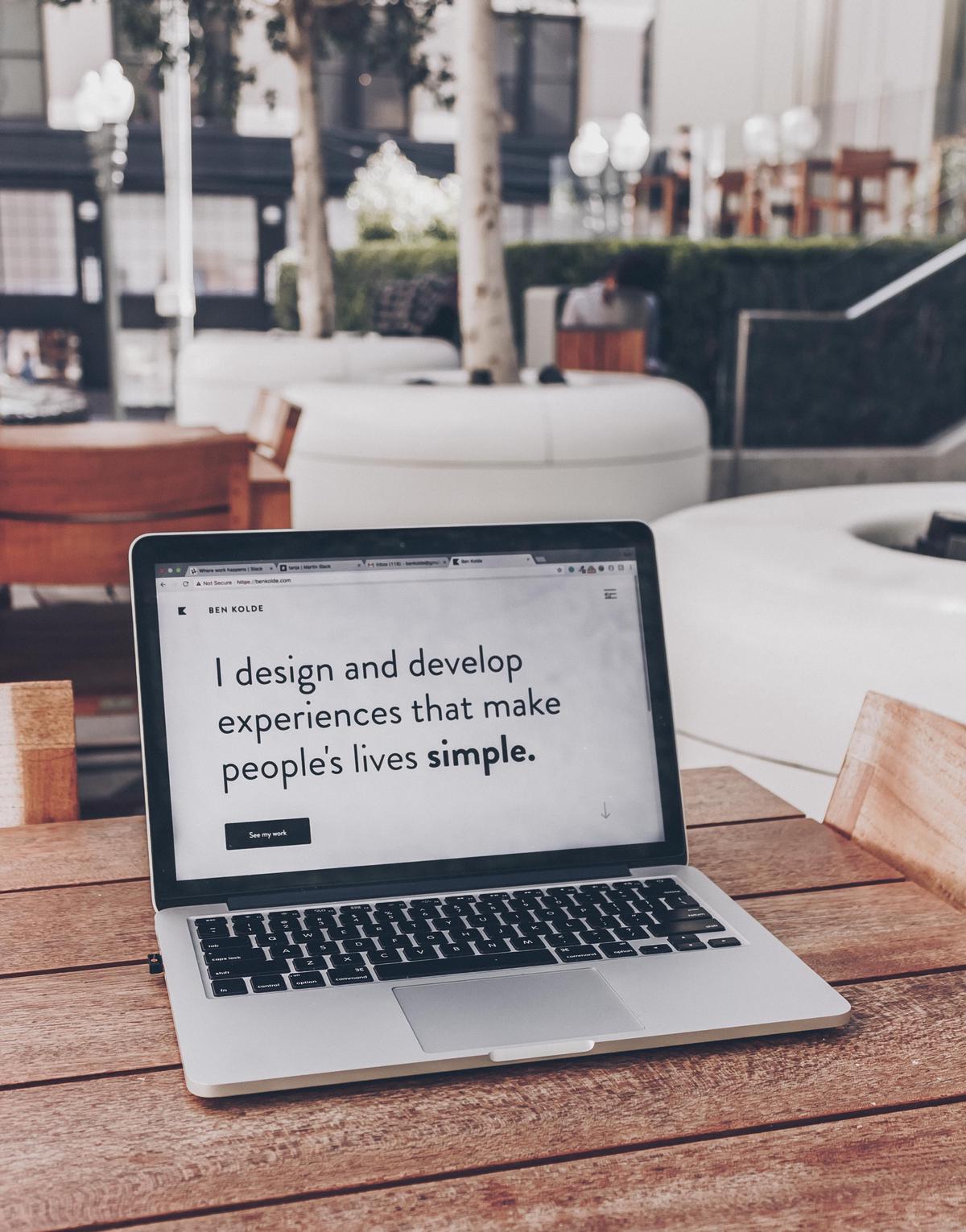With the rapid evolution of technology, establishing a robust online presence has become a pivotal factor for success in today’s digital age. Whether you desire to create a personal blog, launch an e-commerce business, establish your brand, or support your organization, comprehending website customization is fundamentally important. This guide elucidates key aspects of website customization, starting with the very basics and going deeper into essential website coding languages like HTML & CSS. In addition, it introduces crucial web design principles to ensure your website is not just functional but aesthetically pleasing and user-friendly. Lastly, light is cast on SEO and website optimization techniques to make your website stand out in the dense forest of the internet.
Introduction to Website Customization
Introduction to Website Customization
Website customization is the process of making unique modifications to a web page using various tools and techniques. It is important to differentiate your site from others and to enhance the user experience. Establishing a strong online presence begins with understanding some fundamental concepts like domains, hosting, website platforms, and CMS (Content Management System) software.
A domain is simply your website’s name; it’s the address where Internet users can access your site. Selecting a domain name is a significant step in personalizing your website and should reflect what your website is about.
Hosting services are the technologies and services needed for a website to be viewed on the Internet. Websites are hosted, or stored, on servers and when someone wants to view your site, they need to type your domain name into their browser, which will then connect to your server and deliver the web pages to them via the browser.
Website platforms are the base to build your websites. They can range from simple DIY builders like Wix and Squarespace, comprehensive CMS platforms like WordPress, or robust e-commerce-focused platforms like Shopify.
Choosing a Website Platform
Website platforms offer a wide range of customization options that can cater to the needs of different types of businesses or individual websites. Here are four commonly used platforms:
-
WordPress
WordPress is the most widely used CMS software globally, powering over one-third of all websites on the Internet. It is free to use but does require some time and effort to learn. WordPress offers an impressive range of plugins and themes to enhance your website’s functionality and appearance. Plus, it’s great for SEO.
-
Wix
Wix is a cloud-based web development platform that allows users to create HTML5 websites through a simple drag-and-drop interface. It comes with over 500 customizable templates, an extensive app market, and plenty of other features. Although its free version comes with limited capabilities, it’s a great starting point for beginners.
-
Shopify
Shopify is a web application specifically designed for online stores and retail point-of-sale systems. It’s a subscription-based software that allows businesses to set up an online store and sell their products. It provides a range of templates that can be customized to meet brand requirements and allows both physical and digital goods to be sold.
-
Squarespace
Squarespace is a website builder designed to help creative people build their own websites and showcase their work. It provides a platform where users can design a website through a simple, drag-and-drop interface, while still offering a huge range of customization options for more advanced users.
Choosing the right platform depends on the purpose of your website, your technical prowess, and your budget. Regardless of the platform you select, it is important to remember that customizing a website involves a deeper understanding of user experience, design principles, and SEO. Therefore, continuous learning and keeping abreast with the latest website development trends will help in successfully customizing your website.
With persistence and patience, you’ll have the skills to customize and manage your website effectively in no time. Happy customizing!

Learning HTML & CSS
Understanding HTML & CSS Basics
HTML (Hypertext Markup Language) and CSS (Cascading Style Sheets) are the two primary tools used in coding websites. HTML provides the structure of the website while CSS specifies the presentation and style. Comprehending their essentials can greatly amplify your website customization abilities.HTML Crash Course
HTML is used to define the structure and content of a webpage using tags. Here’s how you can start learning how to use HTML:- Getting Started With HTML Editors: HTML code can be written in any basic text editor, but using a specialized HTML editor like Sublime Text or Atom can be benefit with syntax highlighting and auto-completion features.
- Understanding Basic HTML Structure: An HTML document follows a specific structure. It starts with a DOCTYPE declaration and in the HTML element, it includes a head and body section.
- Learning HTML Tags: HTML tags like h1, p, img, etc., help define different parts like headings, paragraphs, and images. There are many online resources that explain what each tag does.
- Practicing with Real Examples: Practice makes perfect. Create a simple webpage using what you’ve learned so far.
CSS Breakdown
CSS is primarily used to dictate the appearance of HTML elements on a webpage. Here’s how you can kick-start your CSS journey:- Getting Familiar with CSS Syntax: CSS rules are made up of a selector and one or more declarations, each of these comprising a property and a value.
- Understanding how to Add CSS: You can include CSS in your HTML in three ways: inline, internal, or external.
- Exploring CSS Properties: Just as HTML has tags, CSS has properties that control the look of an element, like font-size, color, margin, and so on.
- Experimenting with CSS: Changing the colors, fonts, and margins of the elements on your practice webpage will help you get comfortable with using CSS.
Practice and Experiment
The best way to learn HTML and CSS is by practicing regularly and experimenting with different tags and properties. Websites like CodePen or w3schools can provide tutorials and examples that you can use as a reference. Remember, creating a professional-looking website takes time and practice. Don’t get discouraged if your first few attempts don’t turn out perfect. Keep learning and refining your skills. Happy coding!

Implementing Web Design Principles
Understanding Web Design Principles
Web Design Principles are fundamental guidelines that help in creating an amazing and efficient website. These principles include balance, contrast, emphasis, repetition, and alignment.
Balance
Balance is about ensuring that your website has a well-distributed set of elements. Imagine your website as a scale, creating balance involves adding or subtracting elements to keep the layout equal. Understand that there are two types of balance: Symmetrical (same elements are used on both sides) and Asymmetrical (using different elements that have equal visual weight).
The way to achieve a well-balanced website design is by understanding and applying the rule of thirds. Divide your design into a three by three grid and place your most important elements along these lines or their intersections to establish balance.
Contrast
Contrast in web design means making different elements stand out. These differences could include varying sizes, shapes, and colors used in your website. This helps guide visitors’ eyes through your page by highlighting important features and information. For instance, you can use a high contrast color scheme for call-to-action buttons to draw the user’s attention.
Emphasis
Emphasis in a design is the way of making a specific element stand out or draw attention. It can be achieved by contrast, placement, color, size, etc. Be careful not to emphasize too many things at once — it can cause confusion and detract from the most important information.
Repetition
Repetition involves creating a uniform and consistent design by repeating elements such as colors, shapes, textures, and patterns. It not only maintains a cohesive feel but also enhances the overall user experience.
Alignment
Alignment ensures that elements on a web page are lined up. Proper alignment keeps a clean structure to the page, making it easier to understand and navigate.
Creating a User-Friendly Interface (UI/UX)
Your website is your digital storefront and its design plays an immense role in how visitors interact with it. A well-planned User Interface(UI) and User Experience (UX) design can drive engagement, improve site usability, enhance user satisfaction, and increase conversions.
- Understand your users: Know their preferences, behavior, objectives, and needs. Conduct surveys, user interviews or usability tests.
- Simplicity is key: Incorporate the principles of simplicity in your design. Ensure that it is easy to understand and navigate through pages.
- Consistency of design elements: Use the same set of conventions such as color, fonts, and layout throughout your site.
- Responsive design: Your website design should be flexible. It should adapt to the screen size and orientation of the user’s device, whether that’s a smartphone, tablet, or desktop.
Importance of Mobile Responsive Design
With mobile internet usage taking over desktop browsing, mobile responsive design has become an essential part. A mobile responsive design automatically reformats your website for all screen sizes, so your website looks good on smartphones, tablets, and desktops.
- Adapt your layout: Design elements should move and rearrange themselves depending on the screen size.
- Use a flexible grid system: This allows your content to re-size itself depending on the screen size of the device.
- Go for fluid images: Use CSS to ensure images are automatically scaled and resized.
- Try media queries: These allow you to adapt your site for different viewport widths.
Remember, the key to successful website customization is to always place a high priority on user needs and usability, while balancing it with your brand’s personality and goals.

SEO and Website Optimization
Understanding SEO and Website Optimization
SEO (Search Engine Optimization) and website optimization are indispensable tools when you want your customized website to have an online presence. These strategies make your website easier to find, navigate and improve its overall functionality. You must understand key SEO aspects; keyword usage, meta descriptions, and backlinking. Additionally, you can optimize your website speed and accessibility.
Keyword Usage
Keywords are a fundamental component of SEO. Consider these the ‘search’ terms prospective visitors of your site type into the search engine. As such, these keywords should be strategically woven into your site content to enhance its visibility. Here is how you can optimize your site with keyword usage:
- Research Key Phrases: Use tools like Google’s Keyword Planner to find relevant phrases for your website. The most effective ones usually match your products or services and have a high search volume.
- Strategically Place Keywords: Incorporate the keywords in your posts’ headings, subheadings, paragraphs, image descriptions, and URLs.
- Maintain Content Relevance: Always ensure your content remains relevant and meaningful. Overstuffing keywords could lead search engines to categorize your website as spammy.
Meta Descriptions
Meta descriptions are overviews that describe what your website content is all about. They appear under your website’s URL in search engine results and can attract visitors to your site.
- Write Precise Descriptions: Your meta descriptions should be concise and accurately depict your website content.
- Include Main Keywords: Meta descriptions should incorporate your primary keywords while reading naturally.
- Strong Call-to-Action: Ending your meta description with a magnetic call-to-action can motivate users to click on your site.
Backlinking
Backlinking involves linking your website to other extraordinary, relevant sites. It’s an effective way to increase your website’s credibility and boost its ranking on search engines.
- Link to High-Quality Sites: Search engines determine your site’s ranking based on the quality of sites you link to. High-quality backlinks increase your site’s SEO quality.
- Reciprocal Linking: You can engage other website owners in your field by asking them to link back to your site while you do the same for them.
- Content Promotion: Promote your content on social media platforms or through guest posts on other blogs to get more backlinks.
Improving Website Speed and Accessibility
A website’s speed and accessibility significantly influence user experience and search engine ranking. Below are some steps to optimize them:
- Image Optimization: High-resolution images can slow down your site. Resize, compress or switch to JPEG or WebP format to optimize images and boost load times.
- Use Cache Plugins: They save a version of your site on the user’s device, making subsequent visits load faster.
- Promote Mobile Accessibility: Ensure your website has a responsive design for mobile users. Optimize navigation, text size, button size, and forms for mobile users as most people use mobile devices for internet browsing.
- Preview Readability: Use headers, bullet points, and white space individually for effortless reading. Make sure your fonts are at a legible size and contrast well with the background.
By implementing these strategies, you ensure that your customized website is not just visible but provides an enjoyable user experience fostering increased traffic and engagement.

Mastering the art of website customization can dramatically boost your online presence and pave the way for eventual success. With knowledge about domains, hosting services, website builders, HTML & CSS coding, web design principles, and SEO tactics, you’ll be well-equipped to craft a unique, engaging, and optimized website. Remember, a well-established online platform is much more than a collection of web pages; it is an integration of sound design, meaningful content, and efficient functionality. With this guide, you hold the blueprint to creating your own, personalized corners on the internet landscape, fully tailored to serve your needs and express your vision. Let this journey of website customization be a turning point in your digital odyssey.